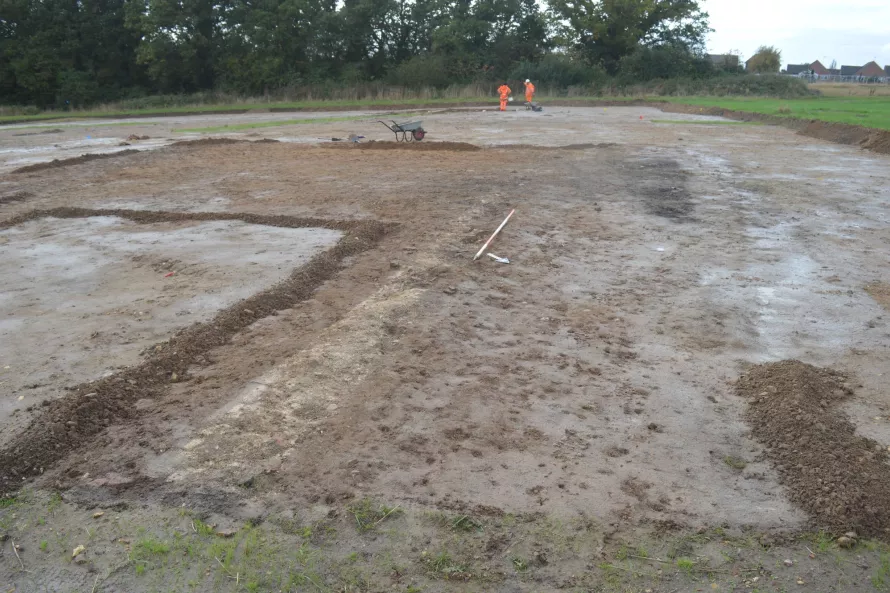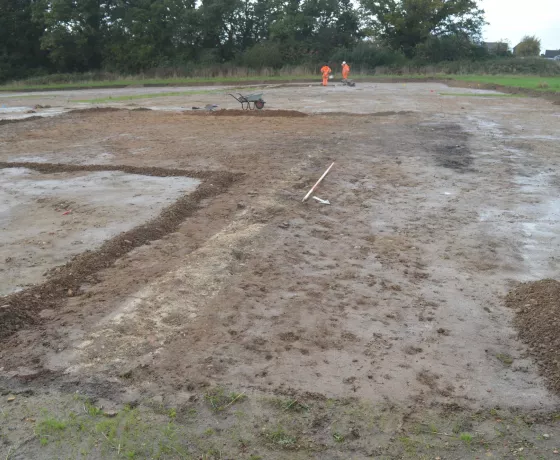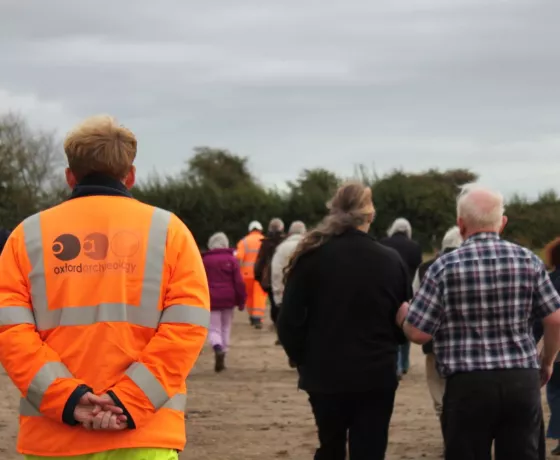Our main task on site at the moment is to clean up all the walls which we’ve found to try and work out how they relate to one another, what size building they make and if we can identify the function of the building. Often, we’re not working with very much to try and unpick these questions. The above wall is actually just what remains of its foundations. After cleaning up this wall, planning it and photographing it, we dug a ‘slot’ though it. This is where remove a 1m long piece of the wall foundation so that we can see its composition. As you’ll see from the photo below, this feature doesn’t have very much of it surviving (the red and white scale is 50cm long), but what we can see are the remains of mortar along with some chunks of tile.
These hand dug slots are the best way that we can collect information about the archaeological features on a site. If we didn’t dig these holes in the archaeology then we wouldn’t be able to recover all the interesting finds and therefore be able to date the remains accurately. We’ve been digging lots of slots in the ditches on site too. By doing this, we can find out what the original shape of the ditch was. We also look at all the different coloured layers of soil within the ditch to try and work out how it has filled in. One thing you’ve always got to ask when looking at ditches is, what happened to the soil which was dug out of it to make the ditch in the first place? Where did that soil go? Chances as it would have been piled up immediately next to the ditch to make a bank. So one of the things that we look for is evidence for this bank eroding back into the ditch, as this will help to tell us how long the ditch was in use for. We also look for soil layers which are full of bits of pottery, as this will tell us that the ditch was purposely back filled. Who knew you could learn so much from a ditch ay?!
Elsewhere across the site, we have been finding some lovely items which give us a bit of an insight into the people who were stationed at the barracks. These include a buckle plate with the name J.T Miller scored into it, as well as a press seal showing a mans head wearing a military helmet.
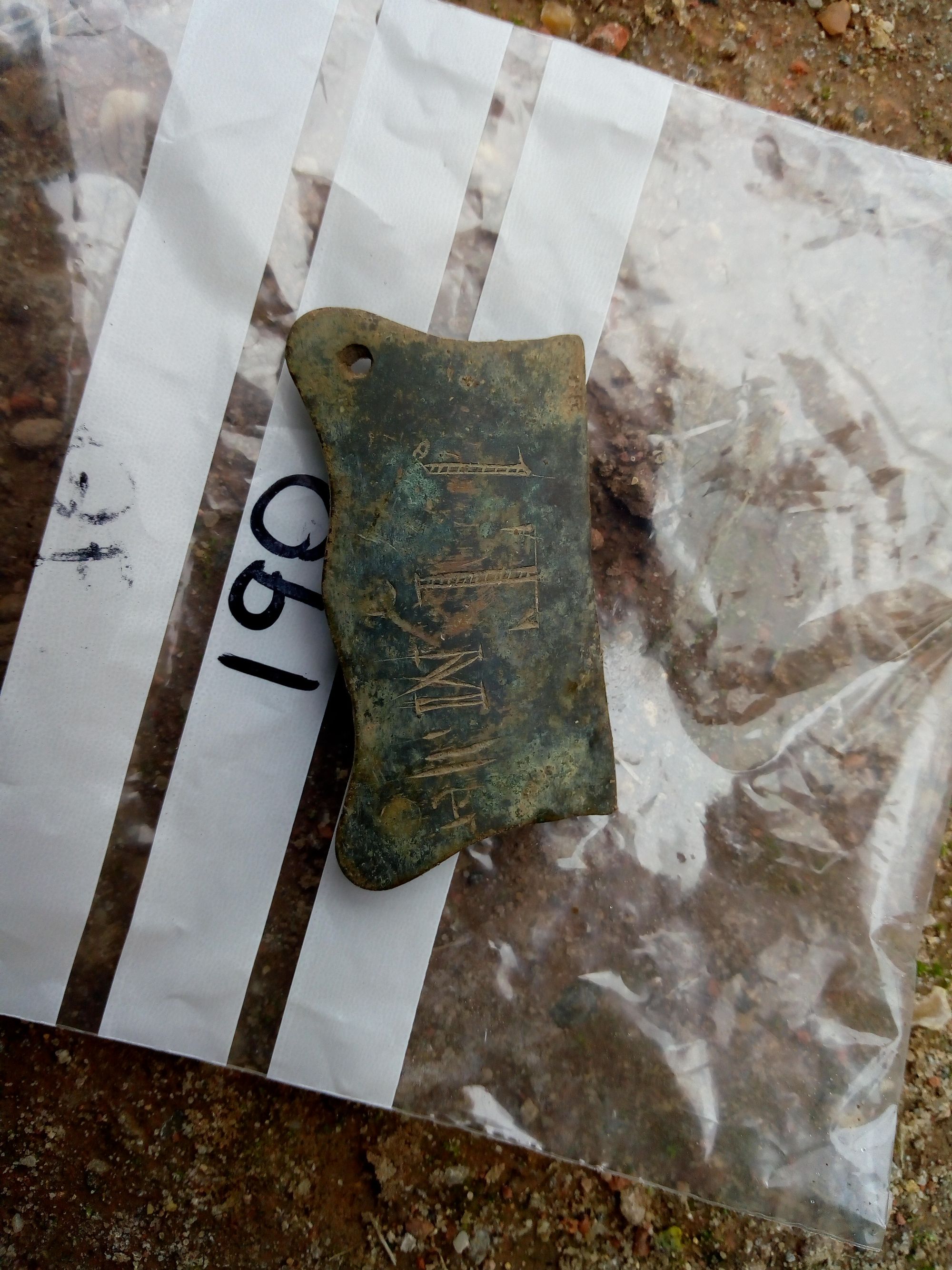
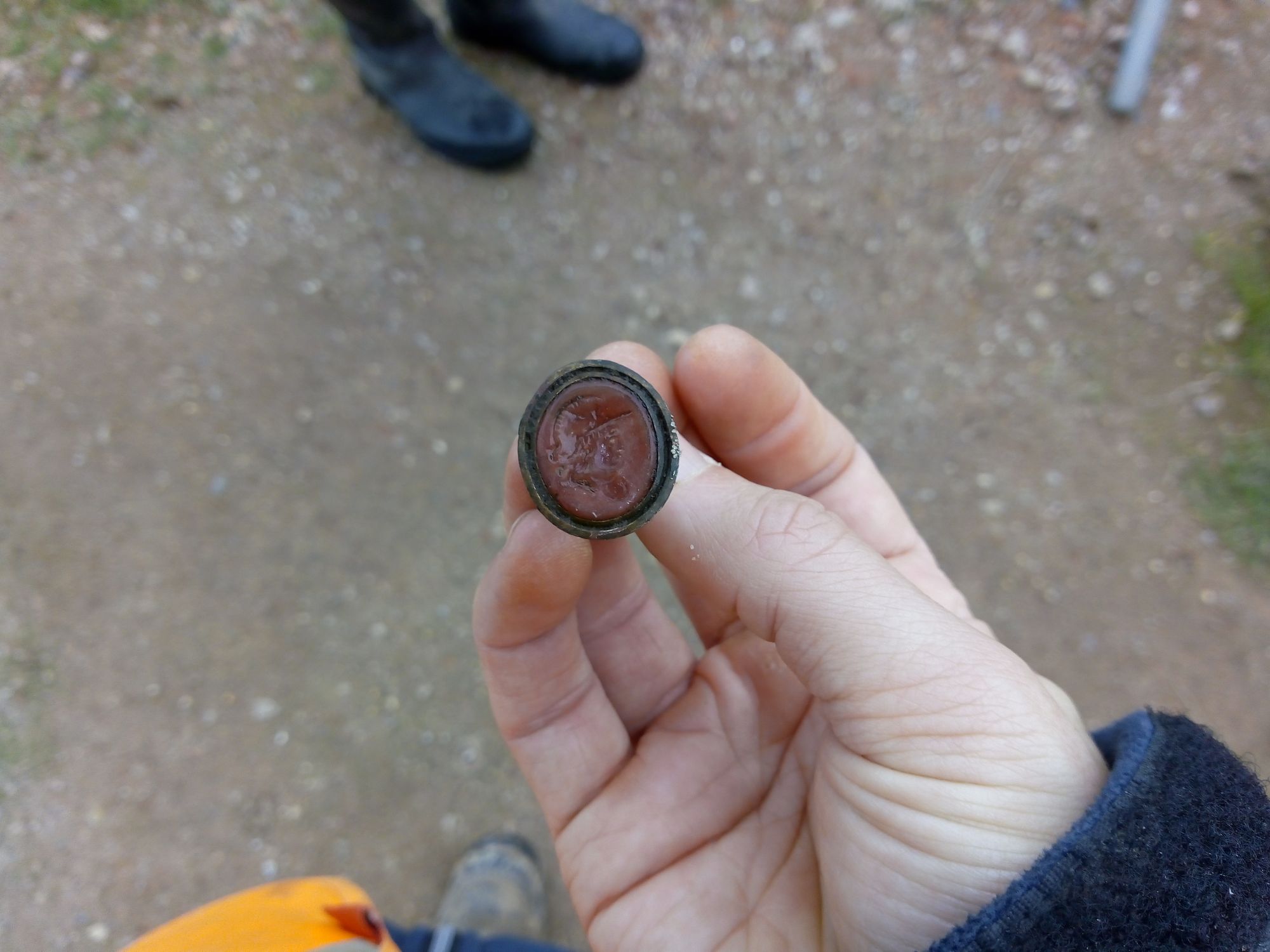
Other posts in this collection
Read our latest posts about the archaeological investigations at Weeley.

